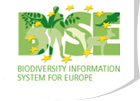Forests are part of the solution towards a climate neutral, circular and inclusive economy in harmony with people and nature
Ways to regain the ecological, social, climatic and economic benefits of forests include:
- protecting forests;
- restoring degraded forest ecosystems;
- managing forests sustainably;
- integrating trees and forests into other sectors and ecosystems (e.g. in agriculture and urban planning)
Protection of forests
SHARE (AND AREA) OF EU27 FORESTS IN PROTECTED AREAS IN 2020
SHARE (AND AREA) OF EU27 FORESTS FOR BIODIVERSITY CONSERVATION IN 2020
SHARE (AND AREA) OF EU27 FORESTS FOR PROTECTION OF LANDSCAPE AND SPECIFIC NATURAL ELEMENTS
At least one fifth of all Natura 2000 protected forests need to be restored.
Restoring and maintaining biodiversity and carbon-rich forest habitats can make a significant contribution to climate change mitigation. It is therefore a major focus in the new EU Biodiversity Strategy to 2030.
Percentage of Annex I habitat areas to be improved per habitat group, %
Restoration
Many forests in Europe are increasingly vulnerable to natural disasters as they suffer from frequent drought and wildfires which foster land degradation and threaten forest ecosystems in a changing climate. Measures for the restoration, adaptation and mitigation of climate change impacts are of utmost importance for forest ecosystems and forestry. The urgent action to combat these impacts calls for implementing solutions in the forest sectors to achieve forest ecosystem restoration and forest land degradation neutrality, and secure relevant ecosystem services to society and human wellbeing.
Tree restoration potential in the European Union (67 Mbyte)
One of the actions of the EU Green Deal is to restore biodiversity, a key nature-based solution to mitigate the negative impacts of environmental degradation and climate change. The study is the first quantitative assessment based on European datasets on Europe’s capacity to restore its ecosystems through tree restoration.The study reveals that an extra 59 M hectares of land could be covered by trees wi- thin EU, when looking only at the biophysical potential of EU outside Natura 2000 sites.
The SUPERB project - Systemic Solutions for UPcaling of urgent Ecosystem Restoration for forest-related Biodiversity and ecosystem services, was launched in January 2022.
The objective is to create a long-term enabling environment for transformative change toward large-scale forest landscape restoration. The project aims at empowering just and informed decisions for the restoration of biodiversity, ecosystem services and carbon sequestration in a manner that minimises region-specific trade-offs and maximises synergies between ecosystem services.
Organisations and individuals across Europe are joining forces to make the European Union’s promise to plant 3 billion trees before 2030 a reality. The MapMyTree application allows for the reporting of the progress of tree planting and hopefully motivates organisations and citizens to plant trees and contribute to nature restoration. To see more, go to the 3 billion tree planting page and the webpage of the EU Commission.
Natura 2000 Network Viewer. The viewer helps to explore the Natura 2000 network. It encompasses over 27,300 individual sites, covering an area of more than 1.1 million square kilometres.
Mapping and Assessment of Ecosystems and their Services (MAES). This is an analytical framework that includes common typologies of ecosystems for mapping and a typology of ecosystem services for accounting.
European Forest Genetic Resources Programme (EUFORGEN) is an international cooperation programme that promotes the conservation and sustainable use of forest genetic resources in Europe as an integral part of sustainable forest management.
IUCN - Presentation of a forest landscape restoration (FLR) methodology to bring back ecosystem functions in degraded forest landscapes.
Sustainable forest management in Europe
The Pan-European concept of Sustainable Forest Management frames a common approach for monitoring and policy-making as implemented by the Criteria and Indicators of Forest Europe.
It covers mainly sustainable wood production and how to balance the annual increment and annual fellings, which is vital for the sustainability of wood production and using wood as a renewable raw material. The balance allows an adequate growing stock and forest environment to provide a range of ecosystem services and non-wood products. Today´s management and wood use must not compromise management options for future generations. The feedstock extracted from forests should not exceed increment in the long term.
The European Green Deal has provided new guidelines for closer-to-nature forest management and payment schemes for forest ecosystem services.
The EU Biodiversity Strategy for 2030 and the EU Forest Strategy for 2030 call for an extended set of indicators to monitor ecosystem health, biodiversity, and climate change, which includes defining thresholds or ranges for achieving a desirable condition for each indicator.
Most forest habitats in the EU are semi-natural (~93%), and the remaining share is covered by plantations (~4%). Only 2% of forests are primary forests undisturbed by humans with a natural tree composition, age structure, regeneration processes, and substantial amounts of deadwood. Such forests provide habitat to forest plants and animals, and flora. The distinction between semi-natural forests and plantations in Europe is not always clear. For instance, planting indigenous species on clear-cut forests can make classifying a forest as a plantation, when the forest reaches maturity, difficult. Planted and natural stands are virtually impossible to distinguish in slow-growing forests after several decades. Furthermore, the definition of plantation forests is interpreted differently in different countries.
Share of broad forest management types in 2020, %
The majority of European forests is covered by semi-natural forests.










